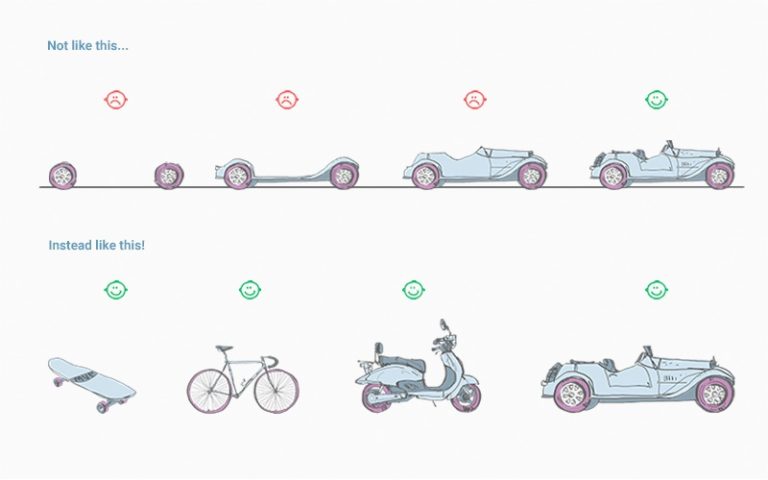The purpose of this e-book is to level up your startup game right from the beginning. It’s not just about developing an MVP, rather, it’s about creating your MVP in the most optimized way possible with a goal of TURNING ASSUMPTIONS INTO FACTS.
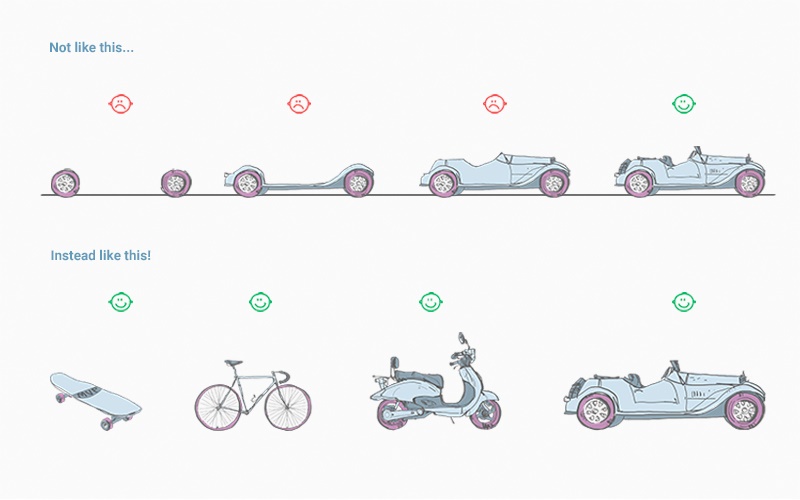
 For instance, when Buffer, a content management / distribution platform for social media channels, was launched in 2010, the company did not cover all the social media platforms that it does today. When they launched the product, Buffer could only share content to Twitter. As the user base scaled and they collected more and more data validating their model, they added Facebook and LinkedIn. They then added Pinterest. A few months back, Buffer rolled out their latest update and added Instagram sharing to their feature arsenal. If you’re looking to see what is meant by a content management system, find out here.
As a non-technical founder crafting the vision for your product, more often than not, your MVP strategy is over-scaled. This means that your MVP is not truly an MVP (remember MVP means the most minimal viable product that will allow you to gather enough data to make an educated decision on your next move). No matter what it is that you are building, there should always be some sort of MVP strategy and long-term vision.
At such an early stage, your long term strategy will most likely change, but with a well-positioned MVP, you will at least be in a position to change and pivot strategically. The development of an MVP product takes foresight and agile decision making, thus allowing you to make changes on the fly while getting your product to market as quickly as possible. Remember, athletes must adjust!
For instance, when Buffer, a content management / distribution platform for social media channels, was launched in 2010, the company did not cover all the social media platforms that it does today. When they launched the product, Buffer could only share content to Twitter. As the user base scaled and they collected more and more data validating their model, they added Facebook and LinkedIn. They then added Pinterest. A few months back, Buffer rolled out their latest update and added Instagram sharing to their feature arsenal. If you’re looking to see what is meant by a content management system, find out here.
As a non-technical founder crafting the vision for your product, more often than not, your MVP strategy is over-scaled. This means that your MVP is not truly an MVP (remember MVP means the most minimal viable product that will allow you to gather enough data to make an educated decision on your next move). No matter what it is that you are building, there should always be some sort of MVP strategy and long-term vision.
At such an early stage, your long term strategy will most likely change, but with a well-positioned MVP, you will at least be in a position to change and pivot strategically. The development of an MVP product takes foresight and agile decision making, thus allowing you to make changes on the fly while getting your product to market as quickly as possible. Remember, athletes must adjust!
 The basic idea of MVP development is understanding truly what your initial product entails, how and who you are going to develop the product with and lastly what data you will be collecting to validate your assumptions. This e-book focuses on the most effective steps to take with product development.
The basic idea of MVP development is understanding truly what your initial product entails, how and who you are going to develop the product with and lastly what data you will be collecting to validate your assumptions. This e-book focuses on the most effective steps to take with product development.
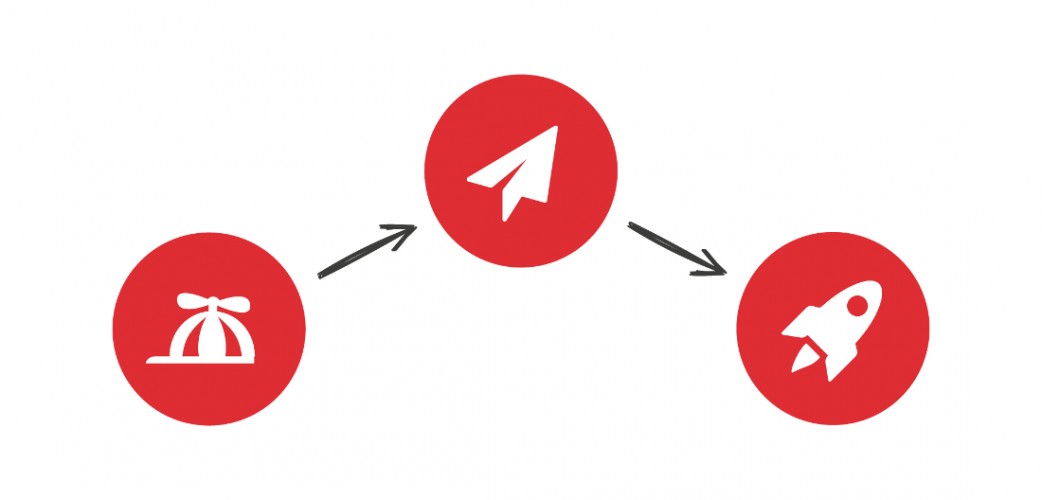
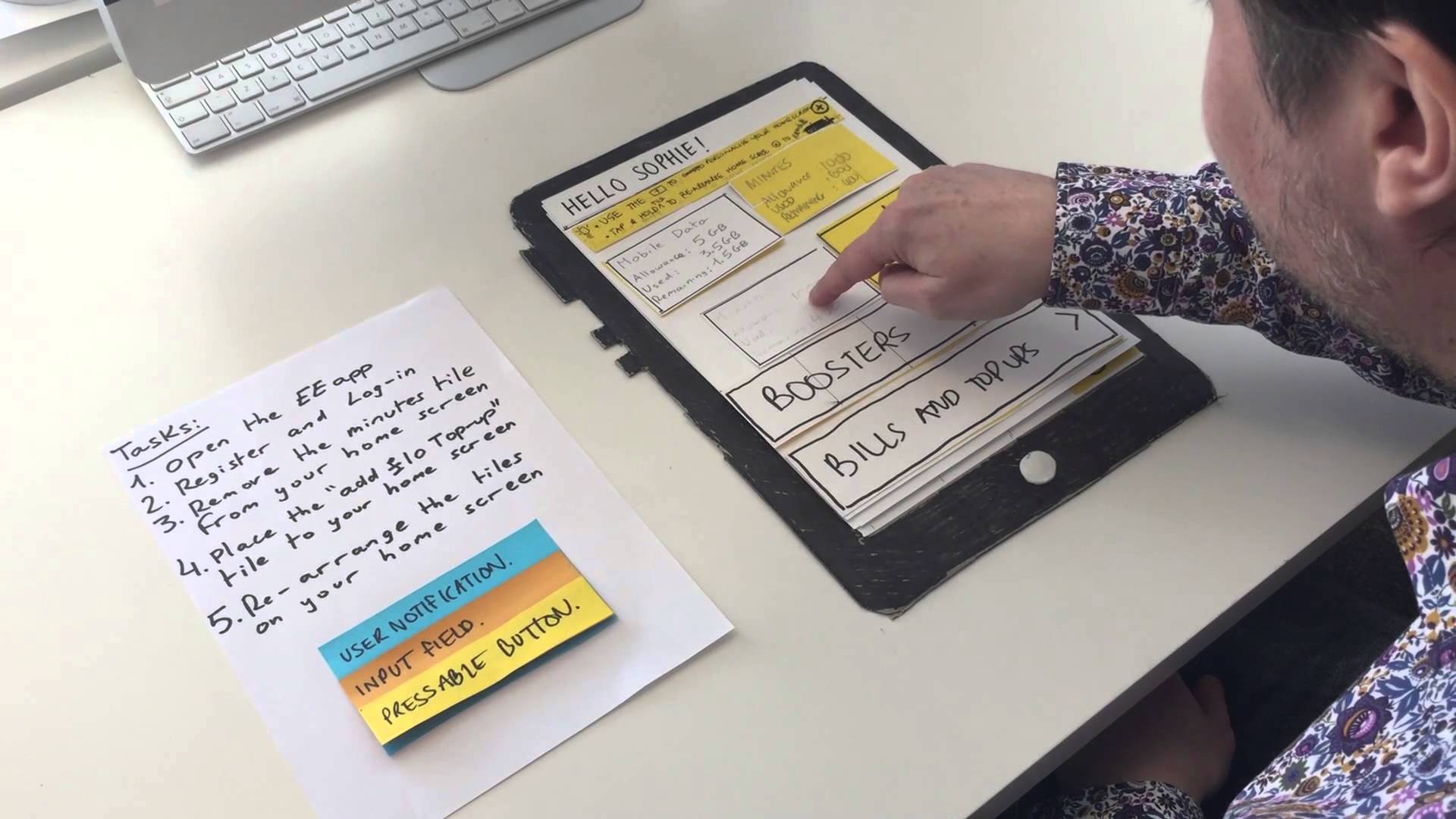
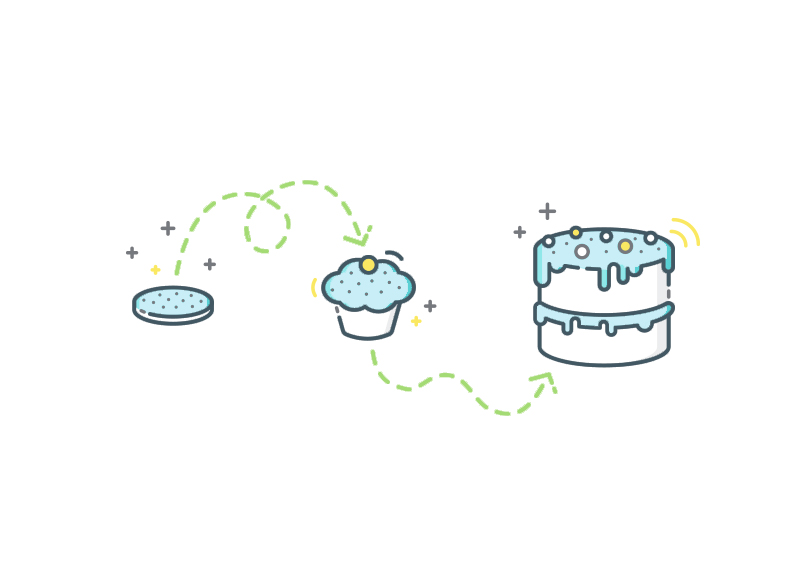 It’s a study that elaborates how effective the product could be. It analyzes the application capability. It contributes to finding the areas where the app lacks and help us understand that how a finished product could be made better.
It’s a study that elaborates how effective the product could be. It analyzes the application capability. It contributes to finding the areas where the app lacks and help us understand that how a finished product could be made better.
 Option A – Outsourced team + Technical Advisor
Option B – CTO + Outsourced Team
Option A – Outsourced team + Technical Advisor
Option B – CTO + Outsourced Team
 To ensure that your product strategy is on point and you are not overscaling, having a technical advisor or mentors who can provide insight is very valuable. Another direction is to seek an outsourced technical partner that specializes in MVP product development. This is the cheapest and most cost-effective option if done right…
An outsourced technology partner, in the context we are discussing, is a team or company hired to create a product from scratch (usually in the form of an MVP) or alongside an already existing team (with an already existing product). A technical advisor is an experienced industry expert who may not be the founder of the company but is advising on various technical aspects of the process such as hiring technologists (i.e. CTO, outsourced technology team, etc.), providing strategic product direction and at times reviewing what is being built to ensure quality assurance. Your technical advisor is not the person coding, rather this is someone who gives you mentorship and advice when it comes to the technology component of your business.
Our goal is to help you get to the point where you can confidently approach and industry expert and bring him/her on board as a technical advisor.
Here are the different product development phases that tell us how a startup comes into existence and what we can do to help you out in the process of developing your next startup:
To ensure that your product strategy is on point and you are not overscaling, having a technical advisor or mentors who can provide insight is very valuable. Another direction is to seek an outsourced technical partner that specializes in MVP product development. This is the cheapest and most cost-effective option if done right…
An outsourced technology partner, in the context we are discussing, is a team or company hired to create a product from scratch (usually in the form of an MVP) or alongside an already existing team (with an already existing product). A technical advisor is an experienced industry expert who may not be the founder of the company but is advising on various technical aspects of the process such as hiring technologists (i.e. CTO, outsourced technology team, etc.), providing strategic product direction and at times reviewing what is being built to ensure quality assurance. Your technical advisor is not the person coding, rather this is someone who gives you mentorship and advice when it comes to the technology component of your business.
Our goal is to help you get to the point where you can confidently approach and industry expert and bring him/her on board as a technical advisor.
Here are the different product development phases that tell us how a startup comes into existence and what we can do to help you out in the process of developing your next startup:
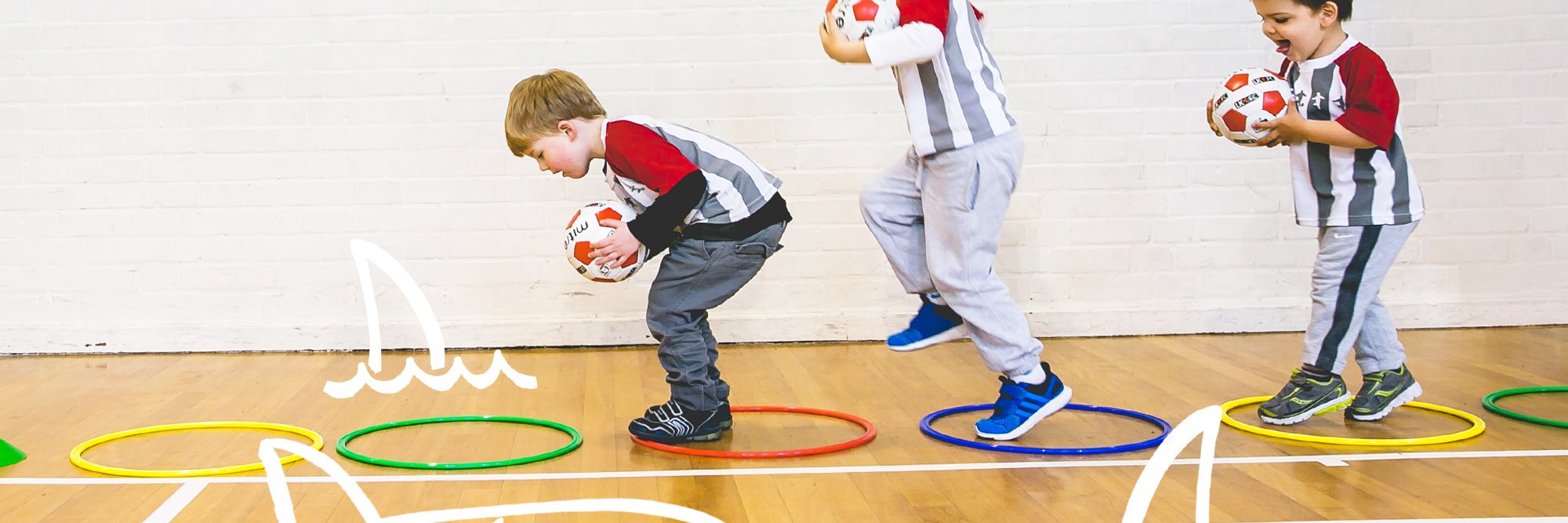 The MVP is a version of the product that is initially developed prior to the major developments to get the maximum validation by making the product available.
Normally the seed funding is a first investment round that any startup comes across but before even going through that procedure, an MVP has a chance to bring the family and friends in. The investment from family and friends does work out at the lowest price and the certain amount of stock is assigned for that.
The technical advisor who is there to guide you through the process can help you in writing the agreements, vetting the plans, predicting the challenges, and analyzing the market readiness.
This stage means that MVP is ready to get the friends and family investment to get the development going. It’s normally a small portion of the equity against a certain amount that is used in the product development.
The MVP is a version of the product that is initially developed prior to the major developments to get the maximum validation by making the product available.
Normally the seed funding is a first investment round that any startup comes across but before even going through that procedure, an MVP has a chance to bring the family and friends in. The investment from family and friends does work out at the lowest price and the certain amount of stock is assigned for that.
The technical advisor who is there to guide you through the process can help you in writing the agreements, vetting the plans, predicting the challenges, and analyzing the market readiness.
This stage means that MVP is ready to get the friends and family investment to get the development going. It’s normally a small portion of the equity against a certain amount that is used in the product development.
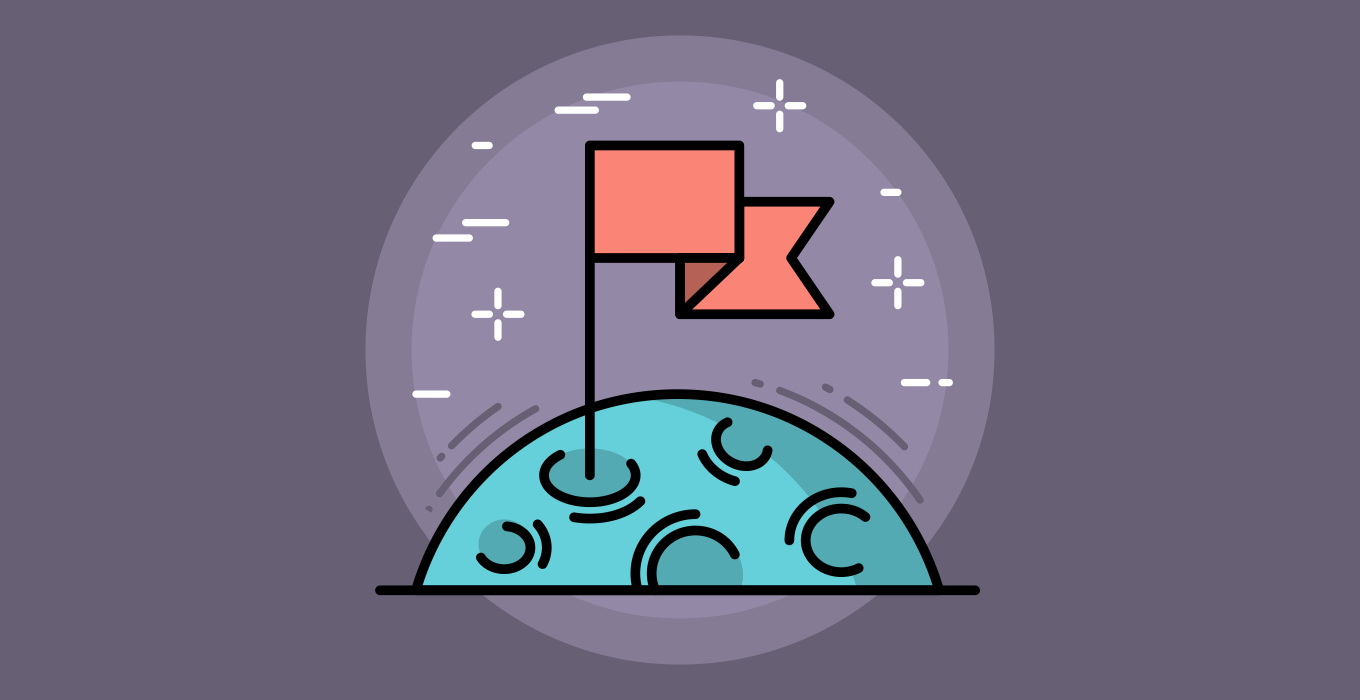 This phase of the product development has got the product ready and raised the seed funding. The seed funding is the first type of investment that a startup raises in the preliminary investment stage to set the direction of the startup and help achieve the goals.
In this setup where you have an outsourcing company working on the product development and you’ve raised the seed funding.
What you need to look at:
This phase of the product development has got the product ready and raised the seed funding. The seed funding is the first type of investment that a startup raises in the preliminary investment stage to set the direction of the startup and help achieve the goals.
In this setup where you have an outsourcing company working on the product development and you’ve raised the seed funding.
What you need to look at:
 At this phase of product development, you’ve finally been able to create the better version of the product and you’ve some user traction as well. The next up is venture capital round that you’re eying at this stage . In the case, you have the following things in hand:
At this phase of product development, you’ve finally been able to create the better version of the product and you’ve some user traction as well. The next up is venture capital round that you’re eying at this stage . In the case, you have the following things in hand:
 In this case where you have a technical co-founder and in-house team to work with, the environment becomes different, so do the challenges. The goal is to develop an MVP without getting much deeper into the process and ultimately creating a scaled version of the product that’s easy to be thrown into the market.
Similarly, Dave Navegt, the co-founder of Hubstaff revealed that finding a co-founder is one of the most important decisions you’ll make.
In this section, we’ll go deeper into the in-house hiring and analyzing the technical co-founder who can help us shape the MVP in the limited resources, and more importantly, what he has got to offer to the company to get through the initial jump-start phase.
In this case where you have a technical co-founder and in-house team to work with, the environment becomes different, so do the challenges. The goal is to develop an MVP without getting much deeper into the process and ultimately creating a scaled version of the product that’s easy to be thrown into the market.
Similarly, Dave Navegt, the co-founder of Hubstaff revealed that finding a co-founder is one of the most important decisions you’ll make.
In this section, we’ll go deeper into the in-house hiring and analyzing the technical co-founder who can help us shape the MVP in the limited resources, and more importantly, what he has got to offer to the company to get through the initial jump-start phase.
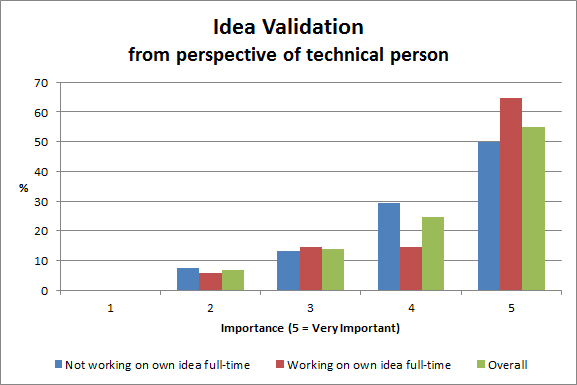 The LaunchBit shared an interesting figure of a survey they did on the idea validation importance and it turned out that 80% of potential technical co-founders agreed that idea validation is of great importance.
The ideation phase does need an initial validation from the technical co-founder before going ahead for building the MVP. These are the key functionalities of the ideation phase in this case:
The LaunchBit shared an interesting figure of a survey they did on the idea validation importance and it turned out that 80% of potential technical co-founders agreed that idea validation is of great importance.
The ideation phase does need an initial validation from the technical co-founder before going ahead for building the MVP. These are the key functionalities of the ideation phase in this case:
 This image is taken from the presentation of Jeff Zabel who presented this at the Boulder Startup Week 2015. It does clarify the process of shifting the concept from ideation to prototype form, and later on, it would go into the testing phase.
The prototype build-up process requires certain approvals that attribute to the flawless product transition. Because the it would go through the testing phase once it gets into a shape.
This image is taken from the presentation of Jeff Zabel who presented this at the Boulder Startup Week 2015. It does clarify the process of shifting the concept from ideation to prototype form, and later on, it would go into the testing phase.
The prototype build-up process requires certain approvals that attribute to the flawless product transition. Because the it would go through the testing phase once it gets into a shape.
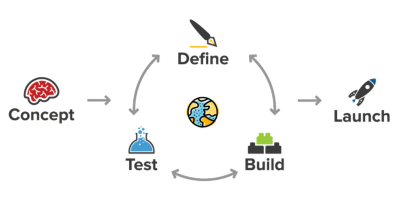 This diagram explains the prototyping and testing phase. The purpose of emphasizing on the clarity of the idea is that ideation is no more being considered here, but rather the implementation is being done on the idea.
The prototype designing phase is a crucial to developing the MVP because MVP is something you’re eying while seeing the prototype being designed under the consultancy of your technical co-founder.
According to the Eric Ries:
“The minimum viable product is that product which has just those features (and no more) that allows you to ship a product that resonates with early adopters; some of whom will pay you money or give you feedback.”
The responsibility of the technical co-founder is collaborate with the in-house development team to keep translating the true essence of the idea in building the prototype for further creating the better MVP form of the product.
Here are some of the essential elements of this stage:
This diagram explains the prototyping and testing phase. The purpose of emphasizing on the clarity of the idea is that ideation is no more being considered here, but rather the implementation is being done on the idea.
The prototype designing phase is a crucial to developing the MVP because MVP is something you’re eying while seeing the prototype being designed under the consultancy of your technical co-founder.
According to the Eric Ries:
“The minimum viable product is that product which has just those features (and no more) that allows you to ship a product that resonates with early adopters; some of whom will pay you money or give you feedback.”
The responsibility of the technical co-founder is collaborate with the in-house development team to keep translating the true essence of the idea in building the prototype for further creating the better MVP form of the product.
Here are some of the essential elements of this stage:
 The image displayed above this paragraph explains the minimum viable product. A donut which isn’t a finished-product yet is considered an MVP, whereas the other one with sprinkles and chocolate topping is displayed as a finished product. What separates a product with and without product market fit is how the sprinkles were placed onto the donut and whether or not data / customer feedback was used to do so.
This phase of MVP readiness and initial investment is the time where you have an MVP ready. Your in-house hired team worked with the collaboration of your technical co-founder in order to get the product off the ground.
The next part in this phase is a time where you need a pre-seed funding round from the family and friends. This is an initial funding stage which provides a product vote of confidence from the inner circle.
There are specific characteristics of this stage which you need to take care of:
The image displayed above this paragraph explains the minimum viable product. A donut which isn’t a finished-product yet is considered an MVP, whereas the other one with sprinkles and chocolate topping is displayed as a finished product. What separates a product with and without product market fit is how the sprinkles were placed onto the donut and whether or not data / customer feedback was used to do so.
This phase of MVP readiness and initial investment is the time where you have an MVP ready. Your in-house hired team worked with the collaboration of your technical co-founder in order to get the product off the ground.
The next part in this phase is a time where you need a pre-seed funding round from the family and friends. This is an initial funding stage which provides a product vote of confidence from the inner circle.
There are specific characteristics of this stage which you need to take care of:
 At this stage, the startups make a lot of decisions based on the circumstances. The MVP is shaping into a product that could serve better, engage the initial users, and able to build the customer based. It’s not the profitable stage for the startup but the product development is rapidly changing the shape of the product.
In order to articulate the situation of a startup at this point, here are some of the things we must know:
At this stage, the startups make a lot of decisions based on the circumstances. The MVP is shaping into a product that could serve better, engage the initial users, and able to build the customer based. It’s not the profitable stage for the startup but the product development is rapidly changing the shape of the product.
In order to articulate the situation of a startup at this point, here are some of the things we must know:

INTRODUCTION
- Failure rate and reason around product dev why startups fail
- Overscaling technology and no MVP strategy
- Showing how to properly scale with Buffer
- Proper MVP strategy – goal of turning assumptions into facts
- Steps to reach an MVP and beyond
 For instance, when Buffer, a content management / distribution platform for social media channels, was launched in 2010, the company did not cover all the social media platforms that it does today. When they launched the product, Buffer could only share content to Twitter. As the user base scaled and they collected more and more data validating their model, they added Facebook and LinkedIn. They then added Pinterest. A few months back, Buffer rolled out their latest update and added Instagram sharing to their feature arsenal. If you’re looking to see what is meant by a content management system, find out here.
As a non-technical founder crafting the vision for your product, more often than not, your MVP strategy is over-scaled. This means that your MVP is not truly an MVP (remember MVP means the most minimal viable product that will allow you to gather enough data to make an educated decision on your next move). No matter what it is that you are building, there should always be some sort of MVP strategy and long-term vision.
At such an early stage, your long term strategy will most likely change, but with a well-positioned MVP, you will at least be in a position to change and pivot strategically. The development of an MVP product takes foresight and agile decision making, thus allowing you to make changes on the fly while getting your product to market as quickly as possible. Remember, athletes must adjust!
For instance, when Buffer, a content management / distribution platform for social media channels, was launched in 2010, the company did not cover all the social media platforms that it does today. When they launched the product, Buffer could only share content to Twitter. As the user base scaled and they collected more and more data validating their model, they added Facebook and LinkedIn. They then added Pinterest. A few months back, Buffer rolled out their latest update and added Instagram sharing to their feature arsenal. If you’re looking to see what is meant by a content management system, find out here.
As a non-technical founder crafting the vision for your product, more often than not, your MVP strategy is over-scaled. This means that your MVP is not truly an MVP (remember MVP means the most minimal viable product that will allow you to gather enough data to make an educated decision on your next move). No matter what it is that you are building, there should always be some sort of MVP strategy and long-term vision.
At such an early stage, your long term strategy will most likely change, but with a well-positioned MVP, you will at least be in a position to change and pivot strategically. The development of an MVP product takes foresight and agile decision making, thus allowing you to make changes on the fly while getting your product to market as quickly as possible. Remember, athletes must adjust!
 The basic idea of MVP development is understanding truly what your initial product entails, how and who you are going to develop the product with and lastly what data you will be collecting to validate your assumptions. This e-book focuses on the most effective steps to take with product development.
The basic idea of MVP development is understanding truly what your initial product entails, how and who you are going to develop the product with and lastly what data you will be collecting to validate your assumptions. This e-book focuses on the most effective steps to take with product development.
Contents
Optimal Process of MVP dev
- Concept / Ideation – Responsibility of Founder
- Identifying a need
- Crafting a vision to address the need
- Design / Prototype Ready – Used to bring on board a technical advisor and dev team (the project is becoming more real)
- This time is used to take your robust concept and hone in on the MVP under the directions of an advisor or Technical team
- MVP Development – With Technical Advisors or MVP specialized Outsourced Team
- Technical advisor helps hone in on the MVP strategy
- If no technical advisor, find a company that specializes in MVP product development
- e. Building Blocks
- Work with this team throughout the MVP launch
- MVP Ready –
- Post beta launch, used to inspire a technical co-founder to come on board / raise pre-seed money … outsourced team is under the direction of the newly instated CTO / Technical co-founder
- This is the time to back your assumptions with data under the direction of a CTO…also used to make early product iterations
- Used to raise funding
Four execution strategies that can lead you to your desired MVP product:

-
Concept and ideation
- Startup is a very early stage and for the most part should work with a freelancer to develop some sort of design prototype
- Goal with this is to get feedback on the concept using a functional design prototype…once you have a significant level of validation and possible funding interest, shop around with development agencies
- If this prototype product development period provided you with enough leverage (received an LOI or funding commits, etc.) to inspire a CTO to join for equity, then negotiate a good equity compensation plan and allow him / her to lead product…
- Most technical co-founders being brought on board will ask for a equity / cash incentives…if you have no leverage, you can give up to much, too early…
- Even if a technical co-founder has been brought on, run a cost-benefit-time analysis of your CTO coding everything or your CTO working in more of an advisory capacity with an outsourced team on the MVP build out
-
Design/ Prototype Ready
- You Know what you want to build
- Have received feedback from people in the industry that this is an idea worth pursuing
- This time is used to take your robust concept and hone in on the MVP under the directions of an advisor or Technical team
- Initial investment to build an MVP with an outsourced agency is the answer…
-
MVP Development – With Technical Advisors or MVP specialized Outsourced Team
- Here a technical advisor helps hone in on the MVP strategy
- If no technical advisor, find a company that specializes in MVP product development.
- Building Blocks is a great example for a company that specializes in developing and finding opportunities for their clients to help increase efficiency and revenue.
- Working with this team throughout the MVP launch
-
MVP ready
- Raise funds to create the MVP with the aid of an an outsourced agency
- At this point, it is worth finding a technical co-founder and allowing him to provide directions on future product strategy
- Your outsourced team has now worked on the initial product and knows it well being that they built the initial MVP
- Keeping them on board as long as you can will maintain your competitive edge, so long as they work cohesively with your CTO and communication is on point.
How to turn your thoughts into a presentable prototype –

-
The Ideation Phase
Let’s break down the ideation phase:
- Identifying a Need
- Creating a Solution
- Shaping a company
-
Design Prototypes
- Wireframing the concept
- Sufficiency Analysis
 It’s a study that elaborates how effective the product could be. It analyzes the application capability. It contributes to finding the areas where the app lacks and help us understand that how a finished product could be made better.
It’s a study that elaborates how effective the product could be. It analyzes the application capability. It contributes to finding the areas where the app lacks and help us understand that how a finished product could be made better.
- Creating the Prototype
- Evaluation and testing
- Making adjustments
- Startup is a very early stage and for the most part should work with a freelancer to develop some sort of design prototype
- Goal with this is to get feedback on the concept using a functional design prototype…once you have a significant level of validation and possible funding interest, shop around with development agencies
- If this prototype design testing period provided you with enough leverage (received an LOI or funding commits, etc.) to inspire a CTO to join for equity, then negotiate a good equity compensation plan and allow him / her to lead product…
- Most technical co-founders being brought on board will ask for a equity / cash incentives…if you have no leverage, you can give up to much, too early…
- Even if a technical co-founder has been brought on, run a cost-benefit-time analysis of your CTO coding everything or your CTO working in more of an advisory capacity with an outsourced team on the MVP build out
- Budget
- Fixed budgets vs. Hourly rates
- Possibility of equity swap for development discount
- Communication / Collaboration
- Ask about their processes of communication – how the teams communicate with clients and what tools they use to do so
- Portfolio
- Refer to a firm portfolio on their website – http://buildingblocks.la/portfolio/
- Technical capabilities / expertise
- Always request a capabilities deck like the one here – https://docsend.com/view/fhk427t
- Testimonials
- Make sure to ask for testimonials / references from clients in your timezone
- Design/ Prototype Ready
- You Know what you want to build
- Have received feedback from people in the industry that this is an idea worth pursuing
- This time is used to take your robust concept and hone in on the MVP under the directions of an advisor or Technical team
- Initial investment to build an MVP with an outsourced agency is the answer… (refer to vetting section below for details on where to go from here)
- MVP Development – With Technical Advisors or MVP specialized Outsourced Team
- Here a technical advisor helps hone in on the MVP strategy
- If no technical advisor, find a company that specializes in MVP product development.
- Building Blocks is a great example for a company that specializes in developing and finding opportunities for their clients to help increase efficiency and revenue.
- Working with this team throughout the MVP launch
- MVP ready
- Raise funds to create the MVP with the aid of an an outsourced agency
- At this point, it is worth finding a technical co-founder and allowing him to provide directions on future product strategy
- Your outsourced team has now worked on the initial product and knows it well being that they built the initial MVP
- Keeping them on board as long as you can will maintain your competitive edge, so long as they work cohesively with your CTO and communication is on point.
 Option A – Outsourced team + Technical Advisor
Option B – CTO + Outsourced Team
Option A – Outsourced team + Technical Advisor
Option B – CTO + Outsourced Team
-
Option A – Outsourced team + Technical Advisor
- Definition / role of both
- How do you inspire a technical advisor to give you time and energy and also convey your vision to an outsourced team
- Ideation, wireframing, prototyping
- Gives you leverage going to an industry veteran
- Hiring an outsourced technology team
- On-shore vs. Off-shore
- Why this option is the most effective for pre-product / pre-funded startups…pros of doing this (use the infographic)
- Cost-effective (pro), etc.
-
Option B – Technical Co-Founder (CTO) + Outsourced Team
- When to bring on a technical co-founder?
- Just as you need leverage to bring on an advisor, you will definitely need leverage to bring on someone full-time as a CTO
- What you should have to bring this person on?
- As a non-technical founder, you do not have a ton of leverage early on…to position yourself with leverage you should build an MVP
- With an MVP product (built by an outsourced team and possibly under the direction of an advisor), you will have more leverage
- Without such leverage, you will either be paying out a lot in cash, a lot in equity, or both…
- When to bring on a technical co-founder?
#1
Outsourced team and Technical Advisor
 To ensure that your product strategy is on point and you are not overscaling, having a technical advisor or mentors who can provide insight is very valuable. Another direction is to seek an outsourced technical partner that specializes in MVP product development. This is the cheapest and most cost-effective option if done right…
An outsourced technology partner, in the context we are discussing, is a team or company hired to create a product from scratch (usually in the form of an MVP) or alongside an already existing team (with an already existing product). A technical advisor is an experienced industry expert who may not be the founder of the company but is advising on various technical aspects of the process such as hiring technologists (i.e. CTO, outsourced technology team, etc.), providing strategic product direction and at times reviewing what is being built to ensure quality assurance. Your technical advisor is not the person coding, rather this is someone who gives you mentorship and advice when it comes to the technology component of your business.
Our goal is to help you get to the point where you can confidently approach and industry expert and bring him/her on board as a technical advisor.
Here are the different product development phases that tell us how a startup comes into existence and what we can do to help you out in the process of developing your next startup:
To ensure that your product strategy is on point and you are not overscaling, having a technical advisor or mentors who can provide insight is very valuable. Another direction is to seek an outsourced technical partner that specializes in MVP product development. This is the cheapest and most cost-effective option if done right…
An outsourced technology partner, in the context we are discussing, is a team or company hired to create a product from scratch (usually in the form of an MVP) or alongside an already existing team (with an already existing product). A technical advisor is an experienced industry expert who may not be the founder of the company but is advising on various technical aspects of the process such as hiring technologists (i.e. CTO, outsourced technology team, etc.), providing strategic product direction and at times reviewing what is being built to ensure quality assurance. Your technical advisor is not the person coding, rather this is someone who gives you mentorship and advice when it comes to the technology component of your business.
Our goal is to help you get to the point where you can confidently approach and industry expert and bring him/her on board as a technical advisor.
Here are the different product development phases that tell us how a startup comes into existence and what we can do to help you out in the process of developing your next startup:
MVP Readiness and Initial Investment
 The MVP is a version of the product that is initially developed prior to the major developments to get the maximum validation by making the product available.
Normally the seed funding is a first investment round that any startup comes across but before even going through that procedure, an MVP has a chance to bring the family and friends in. The investment from family and friends does work out at the lowest price and the certain amount of stock is assigned for that.
The technical advisor who is there to guide you through the process can help you in writing the agreements, vetting the plans, predicting the challenges, and analyzing the market readiness.
This stage means that MVP is ready to get the friends and family investment to get the development going. It’s normally a small portion of the equity against a certain amount that is used in the product development.
The MVP is a version of the product that is initially developed prior to the major developments to get the maximum validation by making the product available.
Normally the seed funding is a first investment round that any startup comes across but before even going through that procedure, an MVP has a chance to bring the family and friends in. The investment from family and friends does work out at the lowest price and the certain amount of stock is assigned for that.
The technical advisor who is there to guide you through the process can help you in writing the agreements, vetting the plans, predicting the challenges, and analyzing the market readiness.
This stage means that MVP is ready to get the friends and family investment to get the development going. It’s normally a small portion of the equity against a certain amount that is used in the product development.
3 Characteristics of this Stage:
1) – Initial Product Display: The product comes out in the minimal viable product form. At this point, the development team has something to showcase, whereas the founders have a product to put up on the table. 2) – Family and Friends Round 3) – Readiness for the Final Product: After the MVP completion, the product development team looks ahead to final product development.The Product-ready Stage:
 This phase of the product development has got the product ready and raised the seed funding. The seed funding is the first type of investment that a startup raises in the preliminary investment stage to set the direction of the startup and help achieve the goals.
In this setup where you have an outsourcing company working on the product development and you’ve raised the seed funding.
What you need to look at:
This phase of the product development has got the product ready and raised the seed funding. The seed funding is the first type of investment that a startup raises in the preliminary investment stage to set the direction of the startup and help achieve the goals.
In this setup where you have an outsourcing company working on the product development and you’ve raised the seed funding.
What you need to look at:
- Outsourced staff efficiency:
- Operational management:
- Cost analysis:
The Product Validation Stage
 At this phase of product development, you’ve finally been able to create the better version of the product and you’ve some user traction as well. The next up is venture capital round that you’re eying at this stage . In the case, you have the following things in hand:
At this phase of product development, you’ve finally been able to create the better version of the product and you’ve some user traction as well. The next up is venture capital round that you’re eying at this stage . In the case, you have the following things in hand:
- An outsourcing team: You’ve outsourced the product without hiring a full-time development team.
- A better understanding: Due to going through a process of product development and coming back and forth the with beta version development, now you’ve developed an understanding with your outsourcing team.
#2
Technical Co-founder + In-house Team
 In this case where you have a technical co-founder and in-house team to work with, the environment becomes different, so do the challenges. The goal is to develop an MVP without getting much deeper into the process and ultimately creating a scaled version of the product that’s easy to be thrown into the market.
Similarly, Dave Navegt, the co-founder of Hubstaff revealed that finding a co-founder is one of the most important decisions you’ll make.
In this section, we’ll go deeper into the in-house hiring and analyzing the technical co-founder who can help us shape the MVP in the limited resources, and more importantly, what he has got to offer to the company to get through the initial jump-start phase.
In this case where you have a technical co-founder and in-house team to work with, the environment becomes different, so do the challenges. The goal is to develop an MVP without getting much deeper into the process and ultimately creating a scaled version of the product that’s easy to be thrown into the market.
Similarly, Dave Navegt, the co-founder of Hubstaff revealed that finding a co-founder is one of the most important decisions you’ll make.
In this section, we’ll go deeper into the in-house hiring and analyzing the technical co-founder who can help us shape the MVP in the limited resources, and more importantly, what he has got to offer to the company to get through the initial jump-start phase.
The Ideation Phase
In this scenario in which you preferred to have a technical co-founder along with in-house development team, the ideation phase could be prolonged for a while because the product idea you may float would be analyzed and discussed between you and other team members. The technical co-founder would have a strong say in the product ideation and because that’s the reason you brought him in into the inner circle in the first place. The building of MVP goes to a whole new level when someone who is experienced in developing the startups, prototyping the products, and fund raising is sitting right next to you and help guiding you throughout. Dave Navegt talked about the traits such as the ability to complete the product, business-minded, and managerial experience to see in a technical co-founder in this article. The LaunchBit shared an interesting figure of a survey they did on the idea validation importance and it turned out that 80% of potential technical co-founders agreed that idea validation is of great importance.
The ideation phase does need an initial validation from the technical co-founder before going ahead for building the MVP. These are the key functionalities of the ideation phase in this case:
The LaunchBit shared an interesting figure of a survey they did on the idea validation importance and it turned out that 80% of potential technical co-founders agreed that idea validation is of great importance.
The ideation phase does need an initial validation from the technical co-founder before going ahead for building the MVP. These are the key functionalities of the ideation phase in this case:
-
Mutual Understanding on the product concept
-
Clarity between the co-founders
-
Communication with the in-house team
Designing the Prototype
At this stage, the teamwork does show some tangible results in terms of outcome. It’s extremely important to understand the circumstances. The focus, energy, and the passion to creating a life-changing product are heightened at this point but at the same time, this might be the time where your MVP is transforming from an idea to life. It may not be the perfect product to rely on but it would something that would boost up the team’s morale. This image is taken from the presentation of Jeff Zabel who presented this at the Boulder Startup Week 2015. It does clarify the process of shifting the concept from ideation to prototype form, and later on, it would go into the testing phase.
The prototype build-up process requires certain approvals that attribute to the flawless product transition. Because the it would go through the testing phase once it gets into a shape.
This image is taken from the presentation of Jeff Zabel who presented this at the Boulder Startup Week 2015. It does clarify the process of shifting the concept from ideation to prototype form, and later on, it would go into the testing phase.
The prototype build-up process requires certain approvals that attribute to the flawless product transition. Because the it would go through the testing phase once it gets into a shape.
 This diagram explains the prototyping and testing phase. The purpose of emphasizing on the clarity of the idea is that ideation is no more being considered here, but rather the implementation is being done on the idea.
The prototype designing phase is a crucial to developing the MVP because MVP is something you’re eying while seeing the prototype being designed under the consultancy of your technical co-founder.
According to the Eric Ries:
“The minimum viable product is that product which has just those features (and no more) that allows you to ship a product that resonates with early adopters; some of whom will pay you money or give you feedback.”
The responsibility of the technical co-founder is collaborate with the in-house development team to keep translating the true essence of the idea in building the prototype for further creating the better MVP form of the product.
Here are some of the essential elements of this stage:
This diagram explains the prototyping and testing phase. The purpose of emphasizing on the clarity of the idea is that ideation is no more being considered here, but rather the implementation is being done on the idea.
The prototype designing phase is a crucial to developing the MVP because MVP is something you’re eying while seeing the prototype being designed under the consultancy of your technical co-founder.
According to the Eric Ries:
“The minimum viable product is that product which has just those features (and no more) that allows you to ship a product that resonates with early adopters; some of whom will pay you money or give you feedback.”
The responsibility of the technical co-founder is collaborate with the in-house development team to keep translating the true essence of the idea in building the prototype for further creating the better MVP form of the product.
Here are some of the essential elements of this stage:
- Testing and Refining
- Alternative Strategies
- Investor’s Eye
- Experts Feedback
The MVP Readiness
 The image displayed above this paragraph explains the minimum viable product. A donut which isn’t a finished-product yet is considered an MVP, whereas the other one with sprinkles and chocolate topping is displayed as a finished product. What separates a product with and without product market fit is how the sprinkles were placed onto the donut and whether or not data / customer feedback was used to do so.
This phase of MVP readiness and initial investment is the time where you have an MVP ready. Your in-house hired team worked with the collaboration of your technical co-founder in order to get the product off the ground.
The next part in this phase is a time where you need a pre-seed funding round from the family and friends. This is an initial funding stage which provides a product vote of confidence from the inner circle.
There are specific characteristics of this stage which you need to take care of:
The image displayed above this paragraph explains the minimum viable product. A donut which isn’t a finished-product yet is considered an MVP, whereas the other one with sprinkles and chocolate topping is displayed as a finished product. What separates a product with and without product market fit is how the sprinkles were placed onto the donut and whether or not data / customer feedback was used to do so.
This phase of MVP readiness and initial investment is the time where you have an MVP ready. Your in-house hired team worked with the collaboration of your technical co-founder in order to get the product off the ground.
The next part in this phase is a time where you need a pre-seed funding round from the family and friends. This is an initial funding stage which provides a product vote of confidence from the inner circle.
There are specific characteristics of this stage which you need to take care of:
- The commitment of the technical co-founder
- The collaboration with the in-house team
- The Family & Friends Relationship
- The cost analysis
The Product-ready Stage
 At this stage, the startups make a lot of decisions based on the circumstances. The MVP is shaping into a product that could serve better, engage the initial users, and able to build the customer based. It’s not the profitable stage for the startup but the product development is rapidly changing the shape of the product.
In order to articulate the situation of a startup at this point, here are some of the things we must know:
At this stage, the startups make a lot of decisions based on the circumstances. The MVP is shaping into a product that could serve better, engage the initial users, and able to build the customer based. It’s not the profitable stage for the startup but the product development is rapidly changing the shape of the product.
In order to articulate the situation of a startup at this point, here are some of the things we must know:
- Seed Funding: The startup has eventually raised the first seed funding which is quite an achievement and it does a little more validation than the pre-seed funding validation from the friends & family.
- Staffing and Management: It’s probably the best time to start analyzing the team scalability and effectiveness which includes the capacity of the team, year/monthly cost, and other budgeting. The reason is that brands do make decisions about their team-work, employees, and recruitment. Last year Buffer decided to close down their office and work remotely.
- Cost Analysis: From prototype to building-up a whole MVP, there was a process involved, so does the cost. Once the operation goes further and the product enters into the production phase, the cost does change at some point. It’s likely to happen in every startup. It’s time to understand whether you should be paying off the employees hourly or monthly. It might not apply to every startup.
- Quality Testing System: The applicable procedure should be applied to fix the bugs and errors in the product. This stage of the product must be a way better than the MVP. Here we’re talking about the product.
- Team Coherence: It defines how gelled the team is for the cause. It automatically reflects into the management. From CRM to emailing , software engineering to communication, at every level of the startup, the team effort is what it makes a brand that is scalable.
The Product Validation Stage
At this stage, the venture capitalists are interested in your product and want to invest in it. The responsibility of decision making is at the highest point. In the case, where you have an in-house hired team and a technical co-founder is working with you in making your product off the ground, the decisions are crucial to make and some new questions are like to arise at this point. When your MVP has been built and you’ve even got friends & family and seed funding rounds, your product and brand would be in a better shape thereafter, which is why the product validation stage comes which is all about the scalability of the brand. This stage is about venture capital which isn’t easy for any startup to make that far. Before going deeper into the product validation, there are certain things a startup must know:- Customers’ Management:
- Staffing and Recruitment: You may want to hire new people and inject in the current team. The recruitment may be necessary when the operations go to the next level and the new technologies are required to be applied, so you would like to bring new technical professionals to your team. The process of taking care of the staff and making sure that everything around there goes well.
- Project Management: At this level, the application of skills, knowledge, tools and techniques come in to aid in the five management processes of initiating, planning, executing, monitoring and controlling, and closing.
- Growth Analysis: The reporting is as important as any other management task. The technical co-founder must closely analyze the growth rate of the startup because what venture capitalists would see is growth rate and the value proposition of their investments.
- Offshore Services Management: At this point, the venture capitalists would like to know about the offshore service management. If there is an offshore company involved in the startup, they might want to know that what kind of interest or contribution they have in the startup. In fact, the cost might be compared while working with offshore and on-shore.
- Quality Control: Quality control is a process through which a startup must clarify the criteria and follow-up procedures on it.


